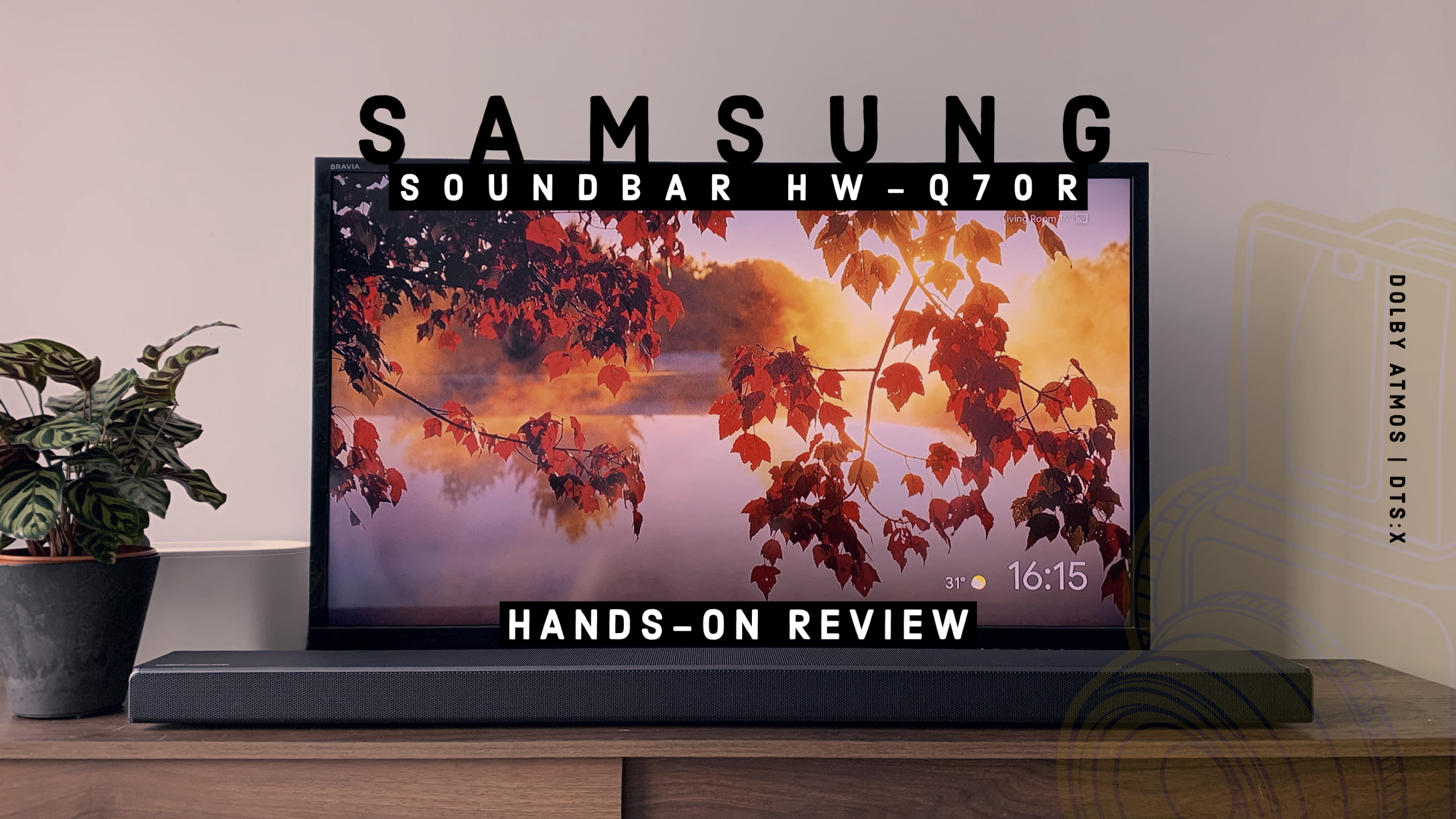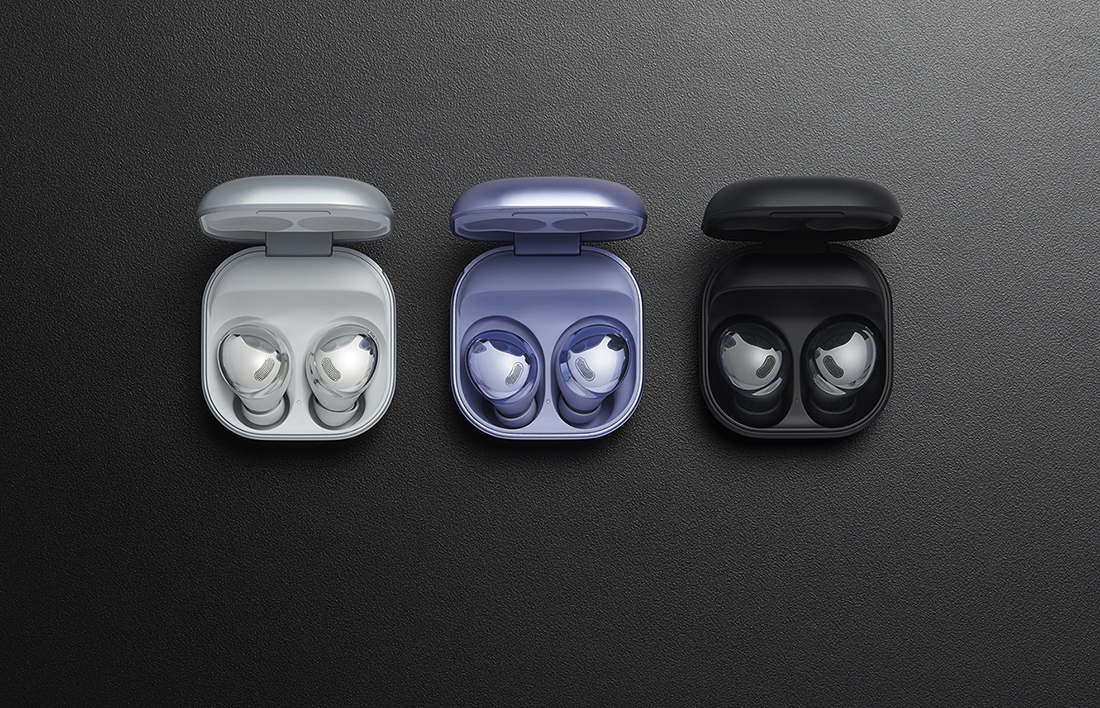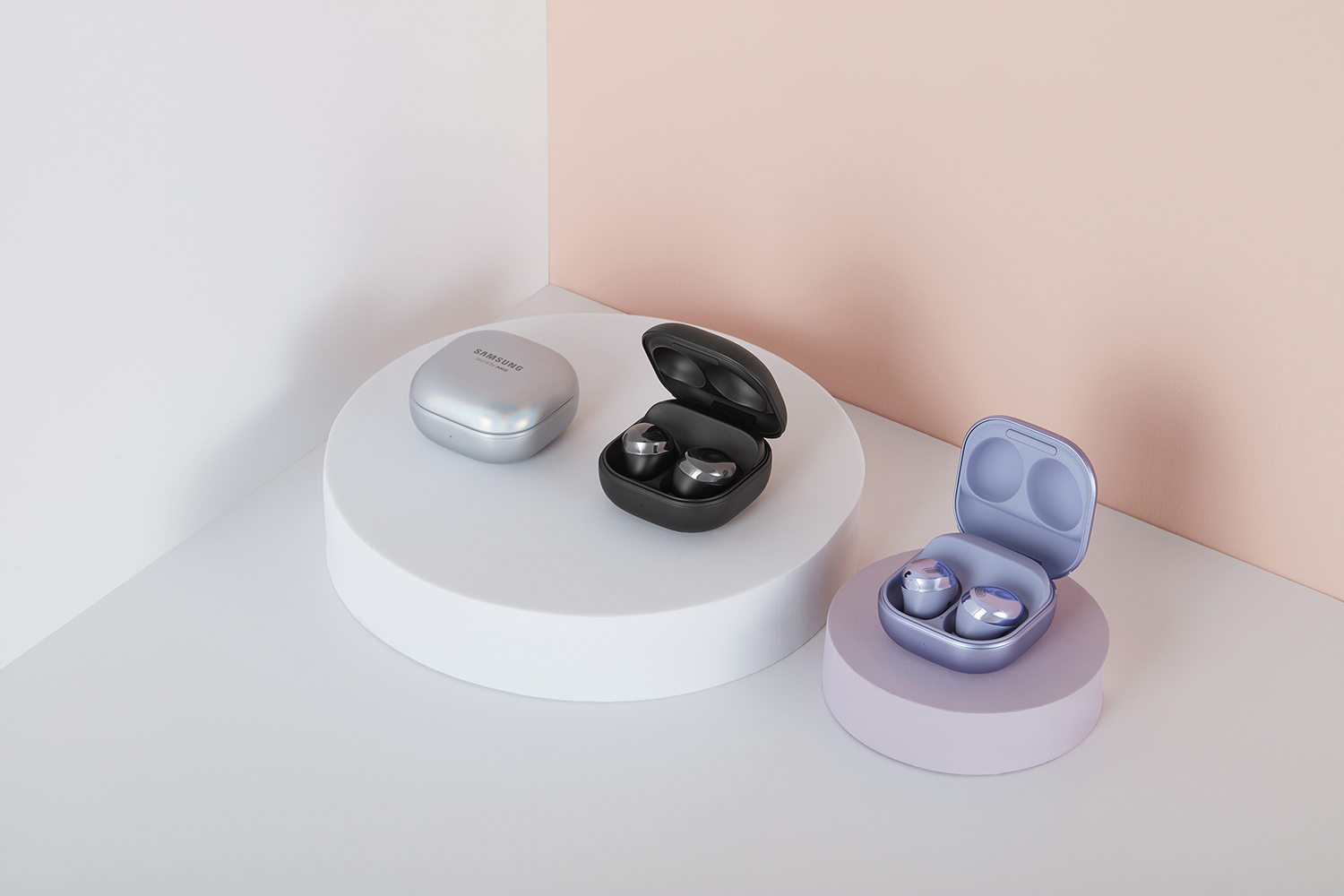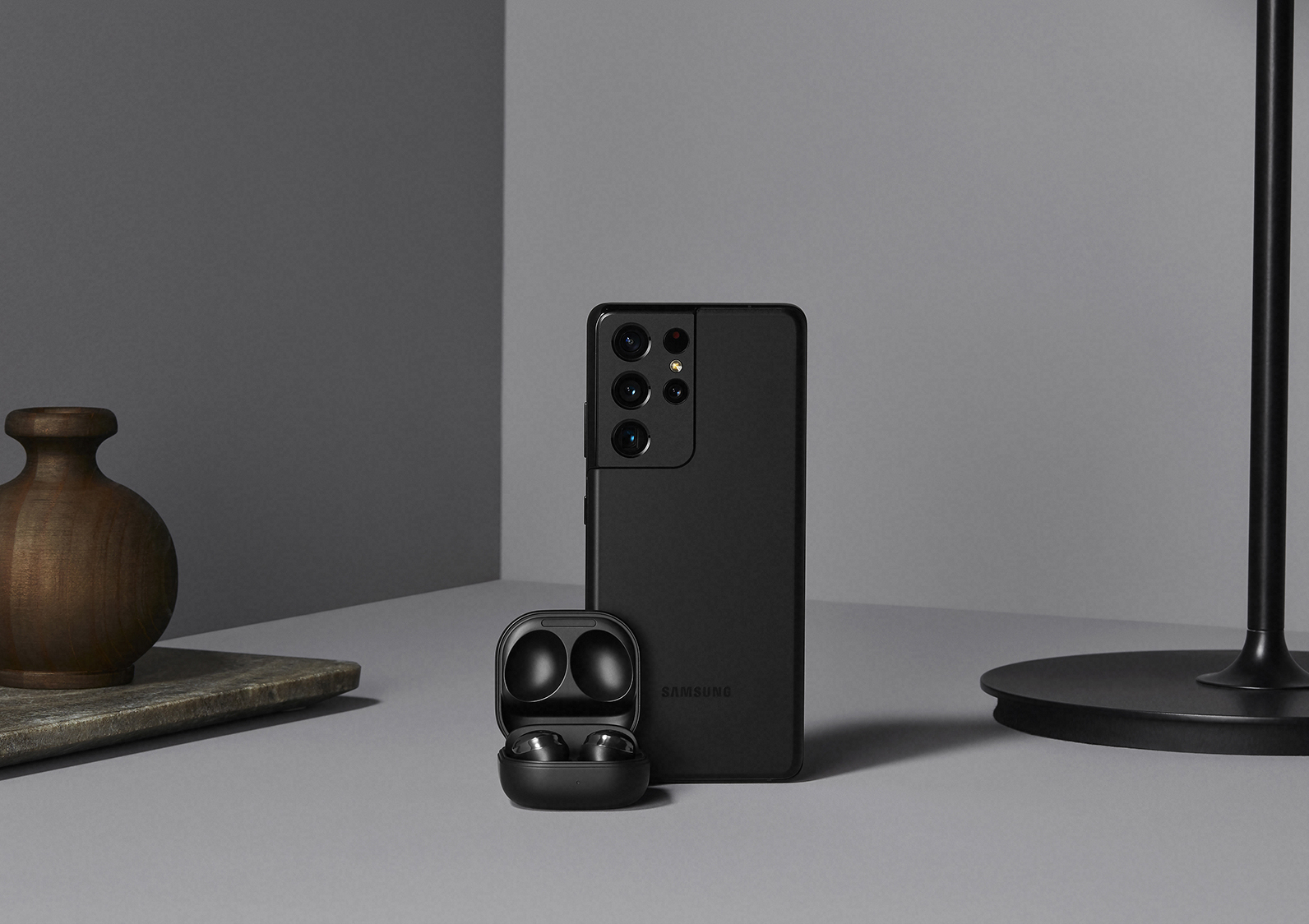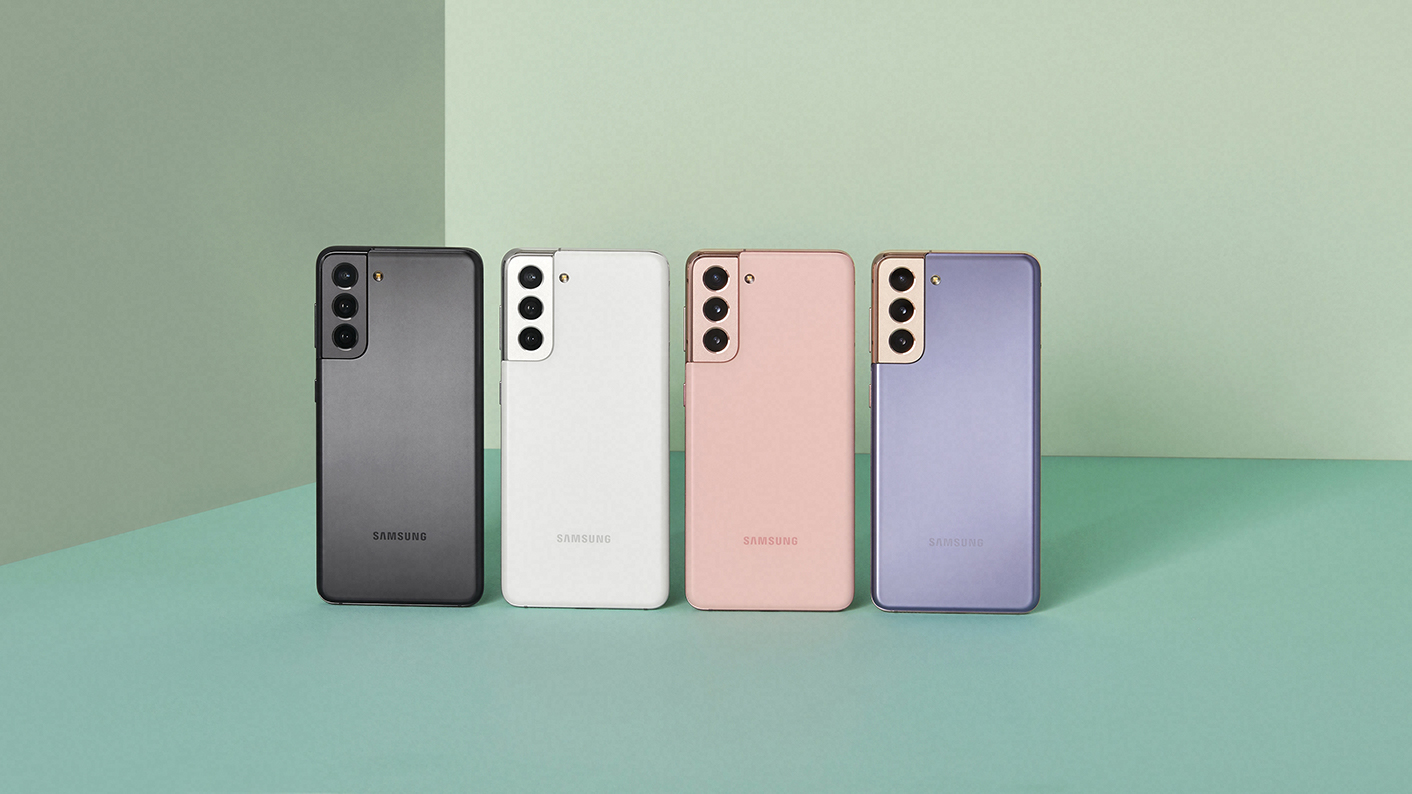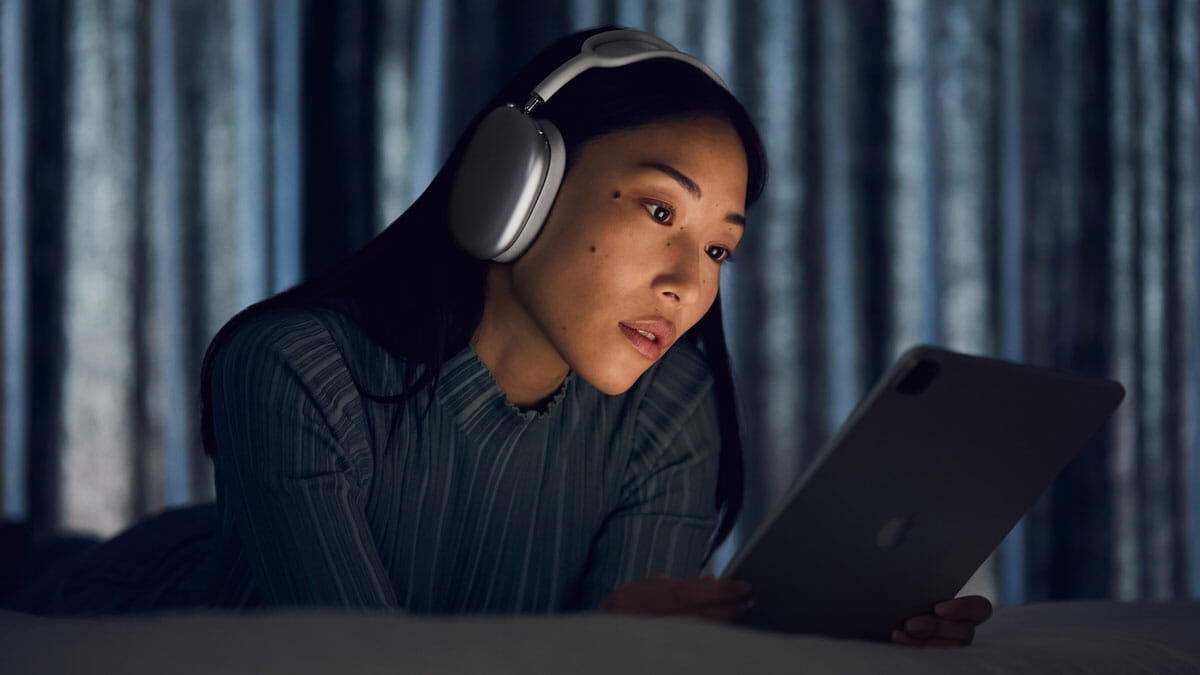Soundbars are gaining in popularity in the household; perhaps it shouldn’t be such a surprise. They’re versatile, simple to set-up, and keep the living room clutter-free while can still offer an audio-visual experience that’s comparable to a conventional multi-speaker home theatre system. If you’re in the market for one, you’ll be spoiled for choice—the usual suspects like Samsung, Sony, and LG have a wide range of soundbars to choose from; anything from MYR200 to thousands.
Of course, no soundbar is made the same, and depending on your budget can determine how much you stand to enjoy your movie or music track, if that ultimately matters to you.
I admit, my recent experience with Sennheiser’s premium Ambeo soundbar had spoiled me rotten. Short of being in a theatre with a 64-speaker Dolby Atmos system, I now know where the benchmark lies, at least where a home theatre system is concerned; and where I aspire my home soundbar setup to be. OK, so the Sennheiser costs MYR13,000, so it wouldn’t be a fair fight to compare it to lower-priced competitors.
That said, you don’t have to spend an arm and a leg (and a kidney) for good quality sound. Samsung demonstrated that last year with their N-series soundbars.
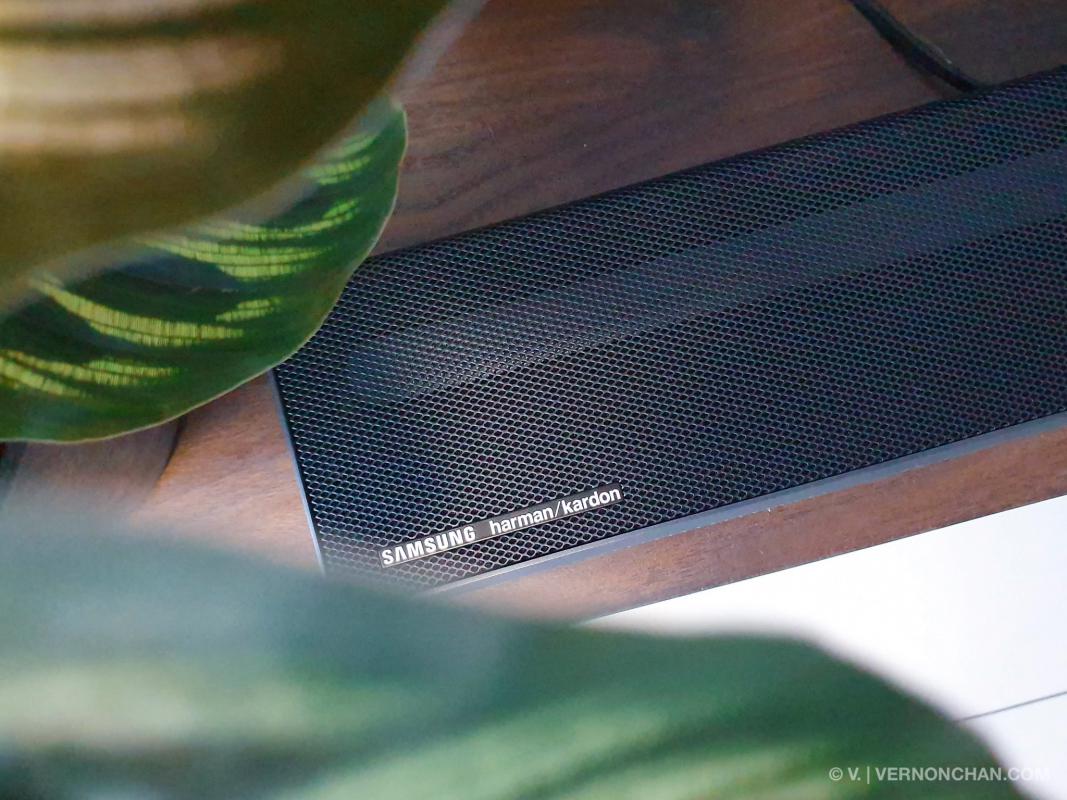
It was thus perfect timing when Samsung Malaysia offered to send me the 2019 Samsung Soundbar HW-Q70R for review. Of course I jumped on the opportunity. Not only because Samsung makes some great soundbars, but it also gives me some ideas on how I’d like my own home AV setup to be.
What Samsung has done this year is streamlining its Q series, and simplifying its naming scheme to match its TVs. So, the HW-Q70R soundbar would match the Q70R QLED TV; the HW-Q90R soundbar would match the Q90R QLED TV, and so forth. Makes perfect sense.
The HW-Q70R sits within the mid-tier of the Q range, so technically it’s one of the “affordable” ones. While it’s not exactly “cheap” in any sense, it’s the lowest-priced soundbar from Samsung that supports both object-based Dolby Atmos and DTS:X.
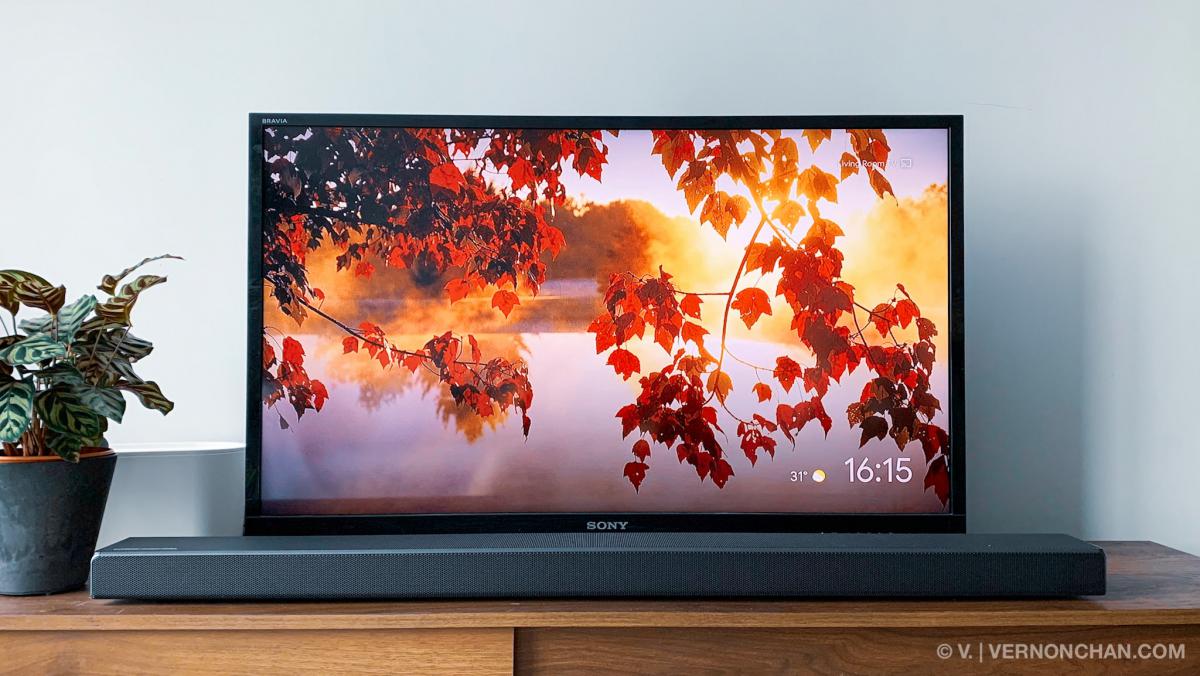
Design and build
If you’re familiar with Samsung’s N-series soundbars, then you’ll notice the resemblance between the HW-Q70R and the HW-N650. They’re siblings pretty much, except that the 2019 version has the addition of Dolby Atmos and DTS:X, plus a better subwoofer.
The HW-Q70R’s lines are clean and minimalistic, with all-metal speaker grilles on the top and bottom. Build quality is excellent.
A four-character LCD display peaks through the lattice on the far left of the soundbar. On the left edge you‘ll find four physical buttons: volume up, volume down, power, and source.
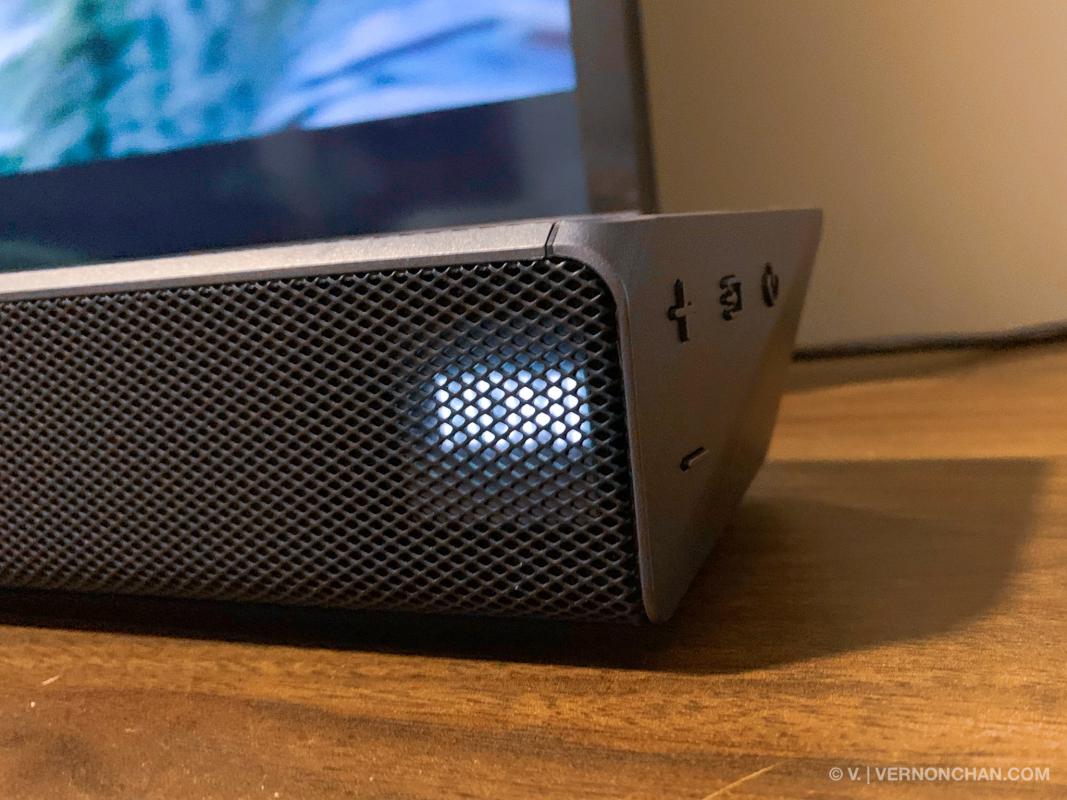
The soundbar itself measures 1,100 x 100 x 59mm (W x D x H) and weighs a scant 3.6kg.
At the bottom, you’ll find HDMI (HDMI In, HDMI Out with TV-ARC) and optical digital audio inputs, micro-USB service port and a 19V power port.
The accompanying 8-inch 160W subwoofer is an unassuming rectangular block which tips the scales at 9.8kg and requires a separate power source.
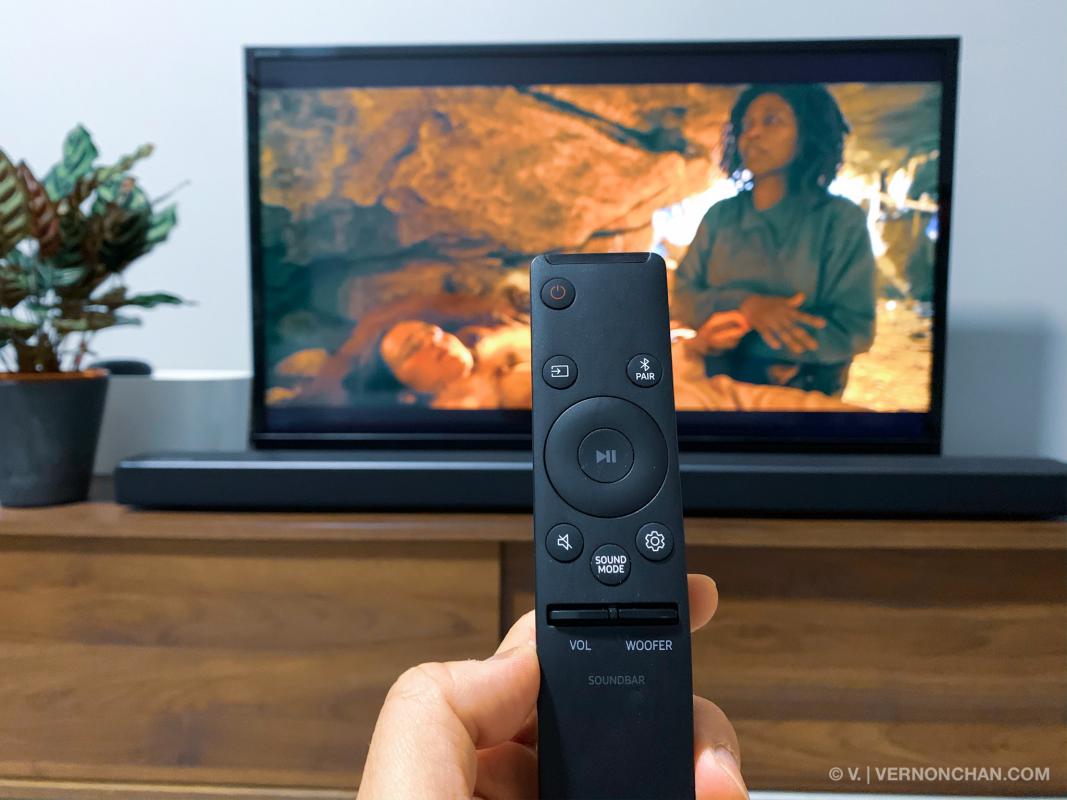
The AA battery-powered Samsung OneRemote is identical to one accompanying other Samsung soundbars. There’s a slight learning curve despite its lack of buttons and minimalist outlook. But once you’ve gotten used to it, you’ll be flying! The remote also lets you control a Samsung TV, and you’ll get an on-screen TV menu.
That’s about it, really!
Hardware and features
So, about the soundbar proper. The HW-Q70R features two upward and five front-firing drivers along the chassis. It has a dedicated centre speaker to enhance speech and dialogue.
Paired wirelessly with the subwoofer, the 3.1.2-channel configuration outputs 330W of total amplification. Samsung doesn’t disclose the actual wattage of the soundbar drivers, but I’m assuming they’re within the 30-40W range.
There are no side-firing drivers like found on the HW-N850, nor rear-firing ones as on last year’s top-tier HW-N950. For true surround sound, you can get the optional SWA-8500S Wireless Surround Kit.
To create audio “height” and “width,” the pair of top drivers are angled diagonally upwards and outwards, as opposed to shooting straight up. Samsung calls it “Samsung Acoustic Beam” that delivers panoramic directional sound by bouncing audio off your living room walls.
For your info, the bare requirement for Dolby Atmos is a 5.1.2 system, so you can technically build upon a 5.1-ch or 7.1-ch system.
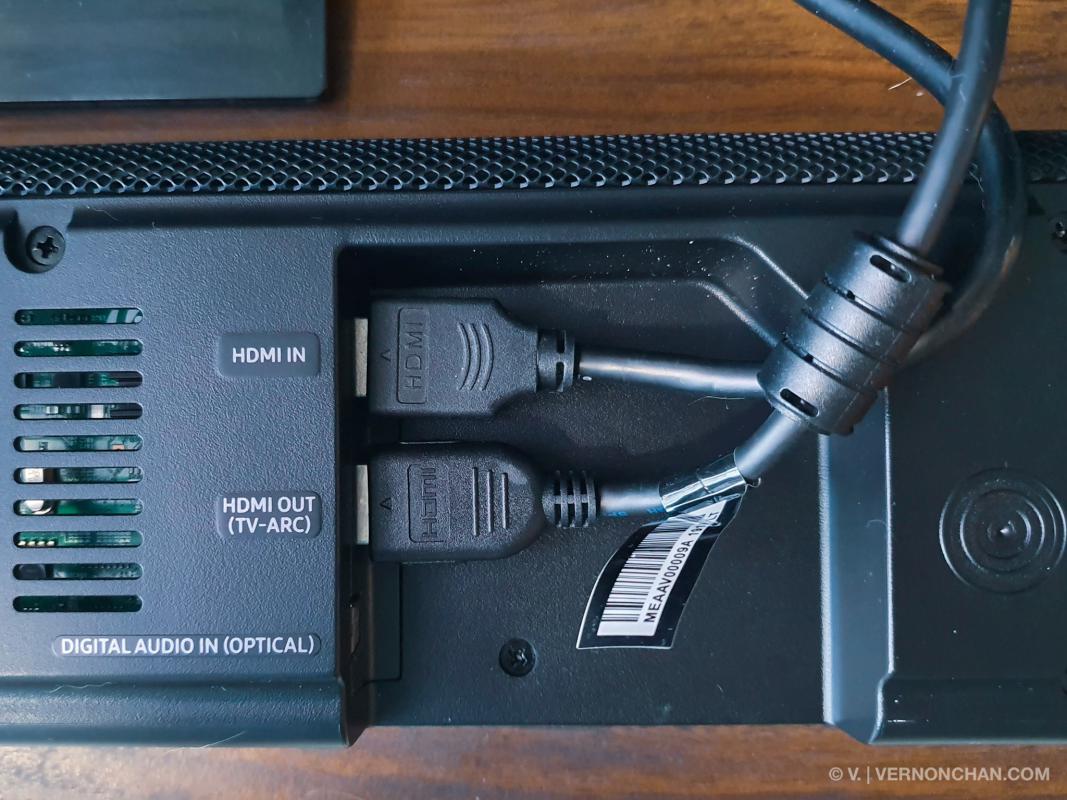
Connectivity-wise, the HW-Q70R, as mentioned earlier, offers single HDMI In, HDMI Out (with TV-ARC) and optical port inputs. It offers both HDR and 4K video passthrough, as well as 2.4GHz and 5GHz Wi-Fi support.
There’s Bluetooth, however, disappointingly, no aptX or aptX HD support. More on this later.
To get connected to Wi-Fi and add the soundbar to your home network, you’ll need to download the accompanying SmartThings app. Through SmartThings you’ll also get Alexa and Spotify Connect support.
The wireless subwoofer is plenty big and hits the low regions of 35Hz, with tuning by Samsung’s subsidiary Harman Kardon.
Samsung has built in four sound profiles into the HW-Q70R: Standard, Surround, Game and Adaptive Sound. Adaptive Sound dynamically adjusts the audio profile to match the content you’re watching, while Surround tries its best to give you a more immersive audio experience despite lacking side-firing speakers.
Note that for Game Mode Pro mode, you’ll need to plug your PlayStation 4 or Xbox to supported 2019 Samsung TVs via HDMI.
It’s a little baffling why there isn’t a music-specific sound profile, although leaving it at Standard gives you tuning capabilities (bass/treble controls and 7-band equaliser) via the remote.
In the box
- Main speaker unit
- Subwoofer
- Remote Controller + Batteries
- HDMI cable
- Wall Mount Bracket
- Power cords
- Screws + holder screw
- Holder Support
- Holder Foot
- Manuals
Performance
Setup is incredibly easy and straight-forward, although I must say getting the soundbar unit out of the box was slightly tricky. The awkwardly-designed box, mostly due to the subwoofer, took some figuring out before I finally got the soundbar and woofer out and on the TV console.
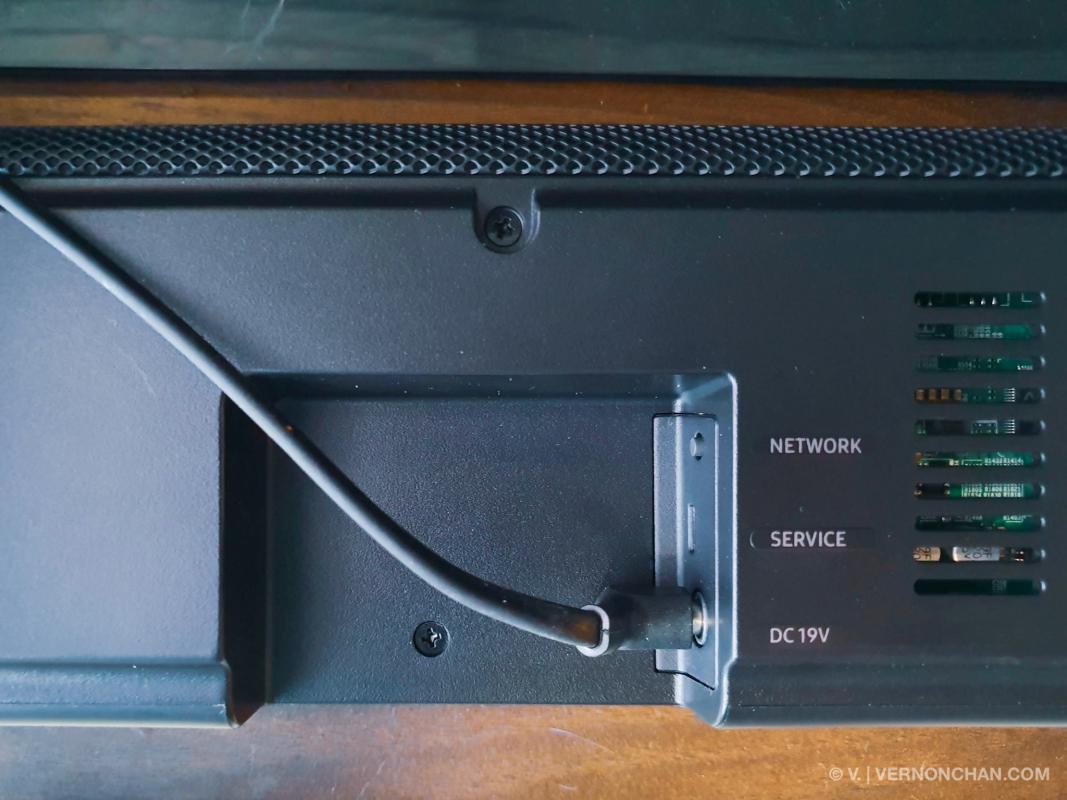
Once out though, simply plug in the power cord, connect the HDMI cable to the TV, in this case my old trusty 40-inch Full HD LED Sony TV; plug in the power cord for the subwoofer, and you’re done.
The setup on my TV console immediately looked ridiculous. The HW-Q70R spanned wider than my over-the-hill Sony TV. A new 55-incher or ideally, a 65-incher, is certainly on the cards!
Also, because of the height of the bar as well as the fact that my Sony TV isn’t mounted on the wall, the IR line-of-sight for my TV is impeded. This shouldn’t be a problem with newer TVs with taller stands, or VESA-wall-mounted units.
The subwoofer comes pre-paired out-of-the-box, and the indicator LED blinks assuringly blue to show you that it’s paired to the soundbar.
Because of how the HDMI IN port is laid out, I was unable to plug in my Chromecast (Gen 1) dongle. A Gen 2 would have been perfect; so do take note. Alternatively, you could get a HDMI extender cable to use with an older Chromecast dongle.
Plugging the Chromecast to my Sony TV’s HDMI port while daisy-chained with the soundbar using the second HDMI port also didn’t work despite many attempts.
It may also be due to my Sony being too old (it’s at least seven years old), but I can’t be sure.
I gave up after trying for a day, so no Netflix cast to the Chromecast for me.
I did however tether my iPad Pro to the soundbar via HDMI and tested Apple TV+, YouTube and Netflix content, and that worked flawlessly.
It’s disappointing that Samsung has stinged on the HDMI input ports, so if you have multiple content sources, like a game console or an Apple TV/Android box, you’re going to have to plug/unplug to swap. Moving up to the HW-Q90R will be the obvious choice, which comes with two HDMI input ports, but that comes at a price. Or course if you’re a true AV enthusiast, a central AV receiver would likely be part of your home theatre setup.
I also tested Bluetooth audio streamed with various devices: iPhone 11 Pro and Samsung Galaxy S10+. It’s worth to note that the soundbar supports a host of decoding formats, from AAC to WAV, AIFF to MP3 and FLAC. Bluetooth connectivity however, is limited to SBC (sub-band coding). So you don’t get aptX or aptX HD. While the difference between SBC and aptX/aptX HD may be negligible in terms of audio quality to an untrained ear, you will notice the difference in latency between the two. On the upside, the soundbar does include Samsung’s own UHQaudio encoding which offers better latency and audio quality over standard fare.
The lack of out-of-the-box Chromecast and Apple AirPlay 2 support is an annoyance more so than a dealbreaker; it’s obvious Samsung wants you to pair this with one of its QLED Smart TVs for a more complete experience. By the way, Samsung’s TV range was the first in the industry to offer Apple AirPlay 2 support out-of-the-box.
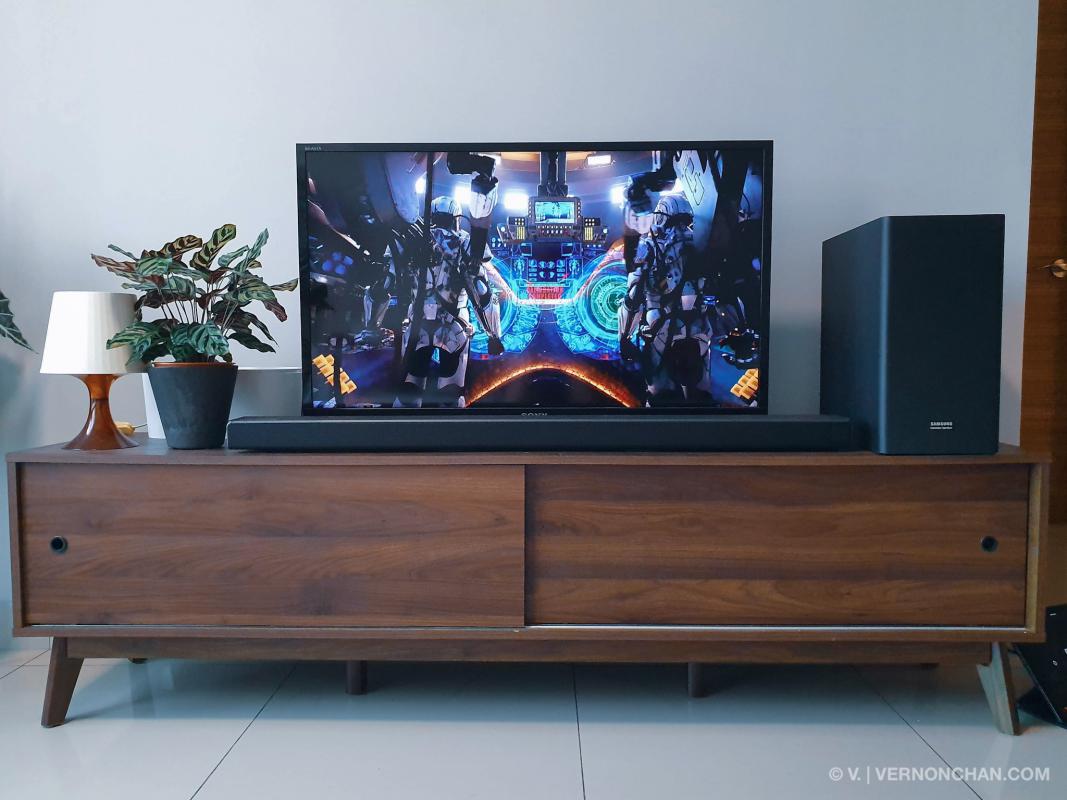
Test content
To kick things off, I lined up a couple of Dolby Atmos-tuned Netflix films to watch: Blade Runner 2049, Pacific Rim, Thor: Ragnarok, Mowgli, and the beautiful Our Planet docuseries. Also, how can you miss Gravity, the film that won Academy Awards for Best Achievement in Sound Editing and Sound Mixing?
I played a couple of Dolby Atmos demo files on YouTube as well.
On Apple TV+, one of my current favourite Apple Original TV series See and For All Mankind were lined up, too.
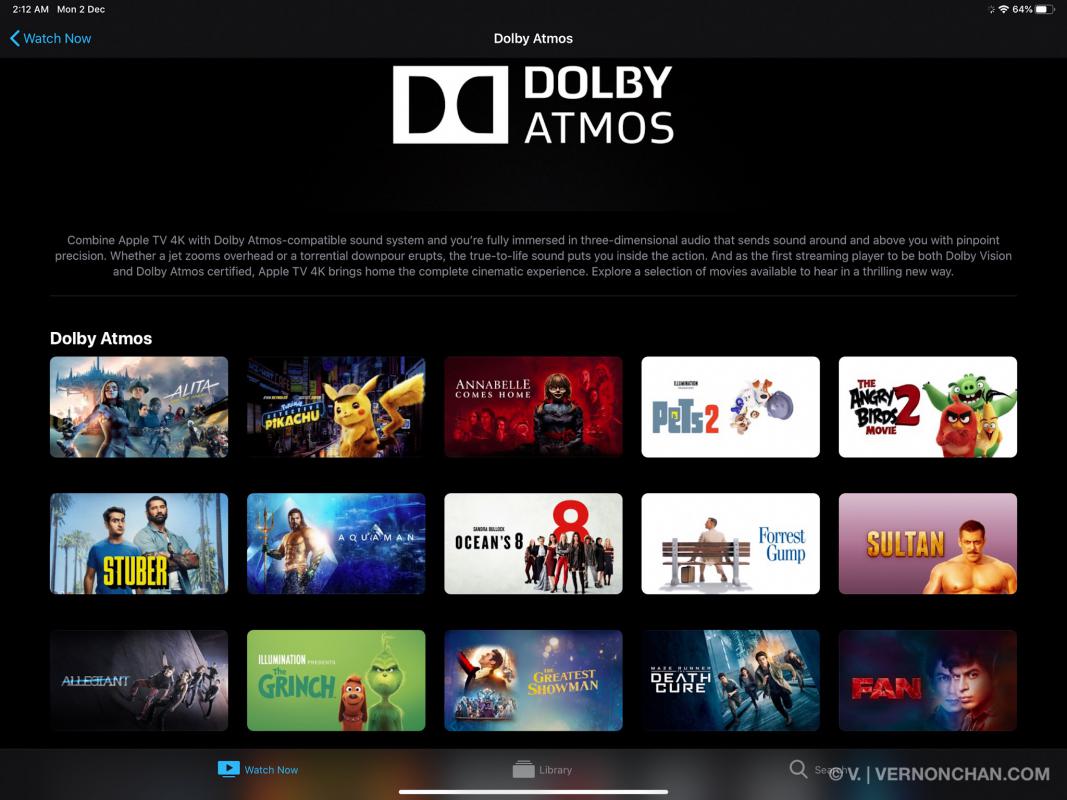
I also put on the epic World World II film Dunkirk by Christopher Nolan on the list; while not Dolby Atmos- nor DTS:X-enabled, still visually and sonically impressive. Oddly, Nolan continues to snub the two audio technologies. It’s a missed opportunity; that said, the magnificently-shot IMAX film does not lack dynamic range, clarity or positional accuracy in terms of audio experience.
Important note: Prior to firmware update 1008.0, the HW-Q70R lacked eARC. While Dolby Atmos can be passed over regular ARC, eARC offers better bandwidth and hence better quality Dolby and DTS audio streams. It also has lip-sync compensation built-in. Also, the HW-Q70R does not support 5.1-ch surround content playback. So, with 5.1-ch source media, the soundbar will mute surround content rather than downmixing them. For a proper surround sound, you can add the SWA-8500S Wireless Surround Kit to the mix.
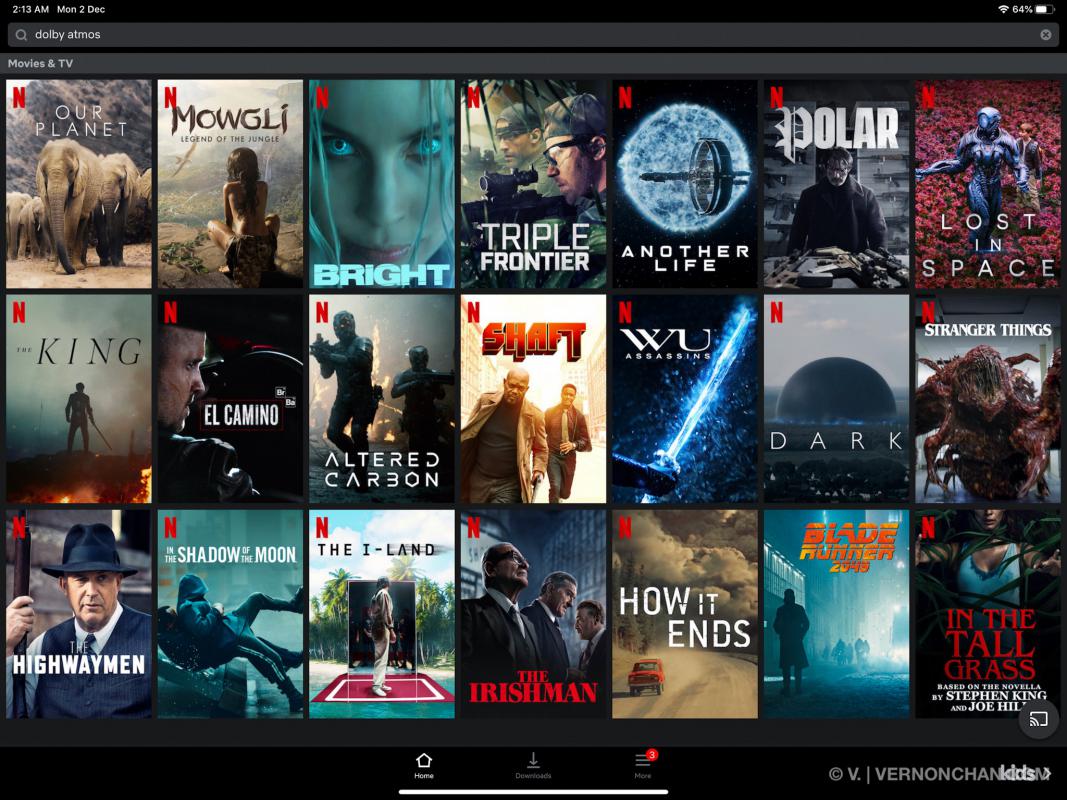
I’m a huge fan of Dolby Atmos and I’m delighted that Netflix is expanding its catalogue of Dolby Atmos titles, especially its originals. Apple TV+ Originals too are Dolby Atmos-optimised right off the bat.
I love that Dolby Atmos puts you in the centre of the action. Because it’s an object-based audio technology, you’ll hear sounds moving across the room, giving you a panoramic feel of the action.
It isn’t just great for action sequences though—what you’ll also find is detail, nuances in a scene reproduced with positional realism and depth.
You’ll come to appreciate Dolby Atmos with content like Netflix’s breathtaking Our Planet series—whether it’s the crumbling glaciers of the Arctic or a coalition of cheetahs chasing down a wildebeest; or the ambient sounds of the Borneo forest, overlaid by the silky tones of the legendary David Attenborough.
The HW-Q70R does a commendable job in giving you height and width through its Acoustic Beam technology, making Our Planet all the more fulfilling.
Blade Runner 2049 sounded fantastic as did Pacific Rim and Gravity, as it faithfully reproduced the nuances in complex action sequences, details in more sombre scenes with dialogue, and the respective thumping soundtracks.
I especially enjoyed Apple TV+’s See, which has much to offer visually and aurally.
Nolan’s Dunkirk, despite the lack of Dolby Atmos or DTS:X still sounded incredible, especially in the epic dogfight scenes and the Luftwaffe’s bombing sequences.
Overall, the HW-Q70R delivers a satisfying panoramic audio experience although I feel “height” can be further improved.
What’s great about the HW-Q70R is that it can go loud, really loud, without distortion. And if you need to quiet things down, like I did watching Thor: Ragnarok at 2AM (I know, sorry, neighbours), the soundbar delivers that brilliantly too. With Adaptive Sound, dialogue is automatically and dynamically enhanced.
The 160W subwoofer packs a punch and can cause a rumble even at low levels. Gave my cats a scare a couple of times!
In terms of music playback, I’d say the HW-Q70R is neutral but somehow lacks overall depth. The lack of a dedicated Music mode or profile gives you a clue that this bar is meant for movies and games. That said, Standard mode will give you some control over how you like your music.
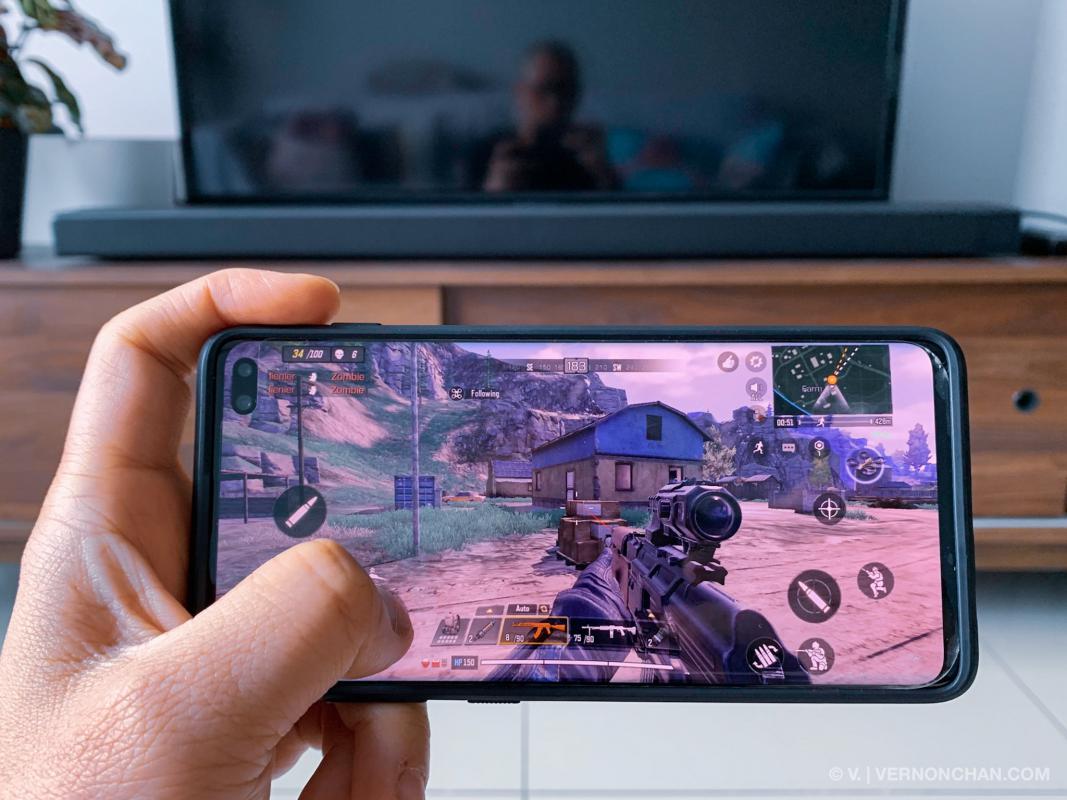
Since I don’t own a PlayStation 4, Switch or Xbox, I didn’t get to test Game Mode Pro. If it’s any consolation, I got it connected via Bluetooth and played Call of Duty: Mobile (CODM) on my Galaxy S10+ and iPhone 11 Pro.
Not the best setup due to Bluetooth latency mind you, but heck, for the record, those were some of the best-sounding COD sessions I’ve had since the ASUS ROG Phone 2.
Pros
- Sleek, minimalist design
- Excellent build quality
- Easy setup
- Simple remote control
- Dolby Atmos and DTS:X support
- Subwoofer offers punchy bass
- Overall good soundstage
- Immersive 3D-like movie experience
- Adaptive Sound does well in enhancing clarity of dialogue
- Soundbar can go really loud
Cons
- No side- or rear-firing speakers
- Only one HDMI input
- No built-in Chromecast, Apple AirPlay 2 support
- No Bluetooth aptX or aptX HD
- Doesn’t play surround content
- Better at movies than music
- Pricey
- Tricky unboxing
Pricing and availability
The Soundbar HW-Q70R retails for MYR3,399 (SRP) and is available at authorised Samsung retailers.
For more information about the Samsung Soundbar HW-Q70R, visit Samsung.
Verdict
Despite the lack of side- to rear-firing speakers, the HW-Q70R does a commendable job of delivering expansive, panoramic audio. Against its competitors it’s a little lacking in the connectivity department as well as Chromecast and Apple AirPlay 2 support, for its price point. However, its sleek design, great build quality, easy setup and overall great sound reproduction more than makes up for it.
Great if you’re looking for a minimalist upgrade to your stock TV or existing 2.1-ch or 3.1-ch setup. However, you may want to consider adding the SWA-8500S Wireless Surround Kit for a fuller, surround sound setup.
And if you need more ports and more drivers, I say move up to the HW-Q80R or HW-Q90R.
Personally, for me, I need a new TV (a 2019 QLED is on the cards) and the Q series soundbars are under serious consideration.
Latest news
- Sony’s New WH-1000XM6: Taking Noise Cancellation to Ridiculous New Heights
- AirAsia Power Bank Policy 2025: New In-Flight Restrictions You Need to Know
- Trump Tariffs: Impact on Tech and Your Wallet in 2025
- Canon EOS R50 V: Why Content Creators Will Love This New Camera
- How to Check Unclaimed Money in Malaysia with eGUMIS (2025 Guide)
Subscribe to Vernonchan.com: Never miss a story, read stories on Feedly and Medium
Disclosure: Keep in mind that VERNONCHAN.COM may receive commissions when you click our links and make purchases. Clicking on these links cost you nothing and it helps to cover some of the costs for the upkeep of the site. While we may receive commissions, this does not impact our reviews, views and opinions which remain independent, fair, and balanced. Thank you for your support.


